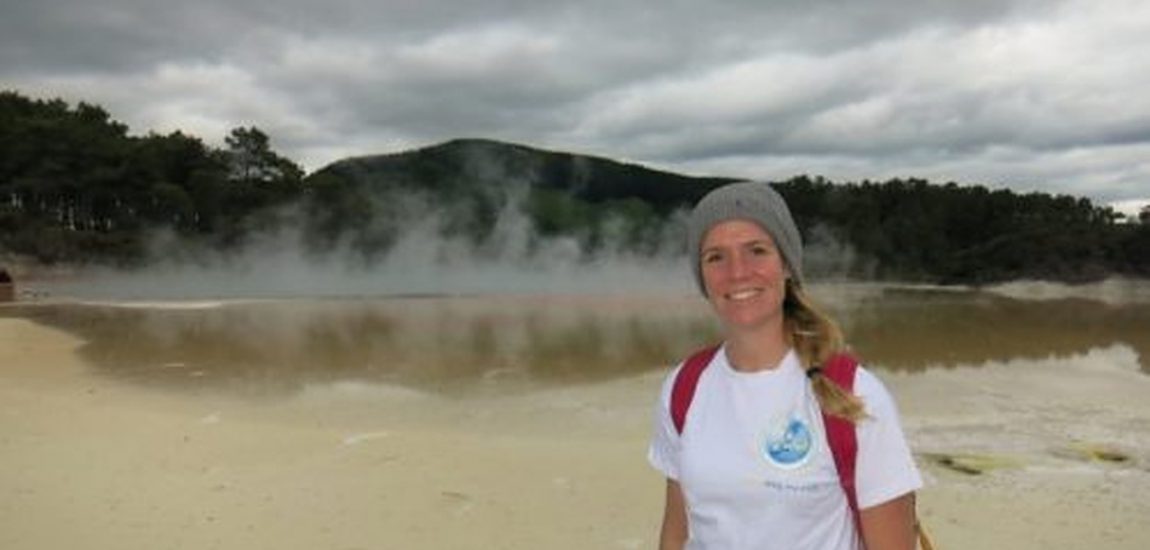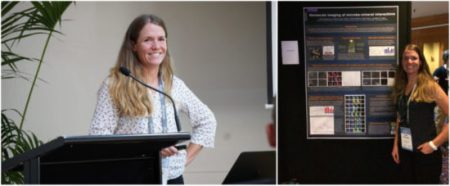
Rotorua bubbles with microbiologists: An EAG Ambassador at ISSM 2017

Thanks to support from the EAG I was able to attend the 2017 conference of the International Society of Subsurface Microbiology, held in Rotorua, New Zealand. Rotorua is an amazing city due to its geothermal activity. It is located next to Lake Rotorua in the centre of the North Island, which formed from a volcanic eruption and caldera collapse around 140,000 years ago. Wandering around the city you can’t help noticing the smell of hydrogen sulfide, and it seems like steaming vents and bubbling pools of mud are present around every corner! It was a perfect location for the conference, as these thermal environments have unique geochemistries and are host to a multitude of extremophilic microorganisms. Not only that, it was the perfect location for geology tourism, and I took the opportunity to visit an active volcano, sinter terraces, and a hot spring spa. I was fascinated to see hydrothermal processes in action, as it gave me a much better understanding of how hydrothermal alteration occurs, and I could compare the active processes to the altered rocks I have previously observed in the geological record.
I was excited to be able to present the results of two different research projects that I have been working on. On the first day of the conference I gave an oral presentation on “Geomicrobiological investigations of a Brazilian Co-Ni laterite deposit”, describing my field study of the Piauí laterite and subsequent laboratory work. I’m interested in understanding how the cobalt and nickel became enriched, and whether microbial activity and biogeochemical cycling may have contributed to this enrichment. The poster session was held on the second day of the conference. It was really well attended, and I had some interesting discussions on my poster “Nanoscale imaging of microbe-mineral interactions”. For this project I made thin films of iron oxides and colonised them with model iron(III)-reducing bacteria, before using NanoSIMS to observe the relationship between actively metabolising cells and the iron oxide surface.
I really enjoyed the conference, especially the inspirational talks from the four keynote speakers on their careers in science, their discoveries, and advice for future research. A particular highlight of the conference was the field trip I went on to Waitomo. Here a series of stunning caves had formed in limestone deposits, and were even more spectacular in the dark as they were home to thousands of glow worms. The field trip was also a great opportunity to get to know people from the conference outside of an academic setting.
I am very grateful to the EAG for the opportunity to attend ISSM as an Early Career Science Ambassador. Thank you!
About the author:
Laura Newsome, a member and ambassador of the EAG, is a geomicrobiologist at the University of Manchester. Laura’s research aims to understand how the activity of microorganisms influences the behaviour of metals and contaminants in the natural environment.
